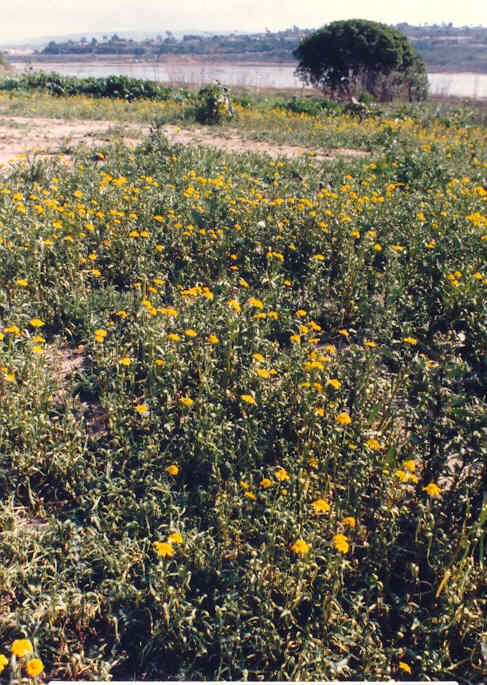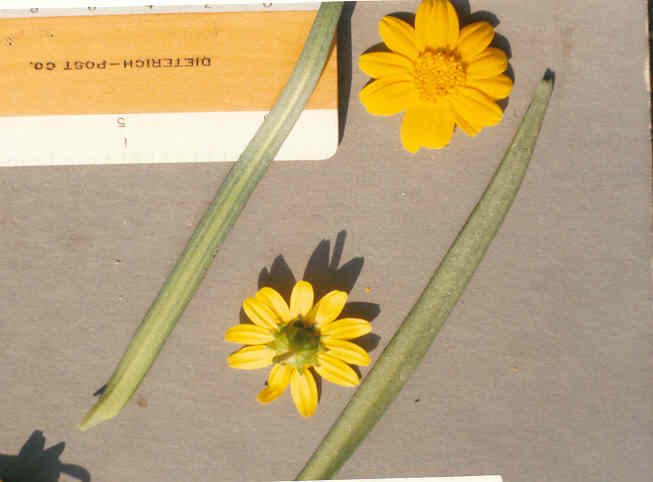
Lasthenia glabrata Lindley ssp. glabrata
Asteraceae (Sunflower Family)
Native
Yellow-Rayed Lasthenia
Smooth Lasthenia
 |
Lasthenia glabrata Lindley ssp. glabrataAsteraceae (Sunflower Family)Native
Yellow-Rayed LastheniaSmooth Lasthenia
|
January Photo
Plant Characteristics:
Annual to 6 dm. high, glabrous, or puberulent lvs. linear or subulate,
obscurely toothed or entire, fleshy, glabrous, connate at base, to 15 cm. long;
invol. to 10 mm. high, depressed-hemispheric, phyllaries united into a cup over
2/3 their length, glabrous; rays yellow, oblong,
ca. 7-15, to 14 mm. long; disk fls. many; anther tips ovate or
triangular; style tips triangular, hair-tufted; aks. glabrous, less than 3.5
mm., club-shaped or ovoid; pappus none.
Habitat:
Salt marshes, vernal pools and damp alkaline spots; Alkali Sink, Coastal
Salt Marsh, etc.; s. San Diego Co. to Kern Co. and Twentynine Palms; Santa Rosa
Id. April-May.
Name:
Named for a Greek girl who attended the lectures of Plato in the garb of
a man. (Munz, Flora So. Calif. 197.) Glabratus,
somewhat glabrous. (Bailey 15).
General:
This plant was introduced to the Santa Ana Heights area in 1987 when the
banks, created with the construction of the new bike and horse path, were hydro mulched. It appears now, after
two seasons, that it will reseed itself and remain in the area.
Photographed along these banks. (my
comments). The Cahuilla Indians,
inhabitants of the Colorado Desert, the San Jacinto and San Bernardino Mountains, collected the dark elongated seeds of
L. glabrata from May through July.
The seeds were parched and ground into flour or eaten dry or mixed with
water as a mush. (Bean & Saubel
84).
A genus of 16 species, one in Chile, the others largely Californian.
(Munz, Flora So. Calif. 197).
Munz, Flora So.
Calif.
does not list ssp. glabrata, the 1993
Jepson Manual does and segregates it from ssp.
coulteri which has hairy aks. Given
the added choice, ssp. glabrata is the
proper identification.
Text Ref:
Abrams Vol. IV 220; Hickman,
Ed. 300; Munz, Flora So. Calif. 197;
Roberts 12.
Photo Ref:
Oct 87-Jan 88 # 25,26,27.
Identity: by R. De Ruff, confirmed by John Johnson.
First Found: March 1997.
Computer Ref: Plant Data 372
Have plant specimen.
Last edit 6/5/04.
 |
 |
January Photo January Photo